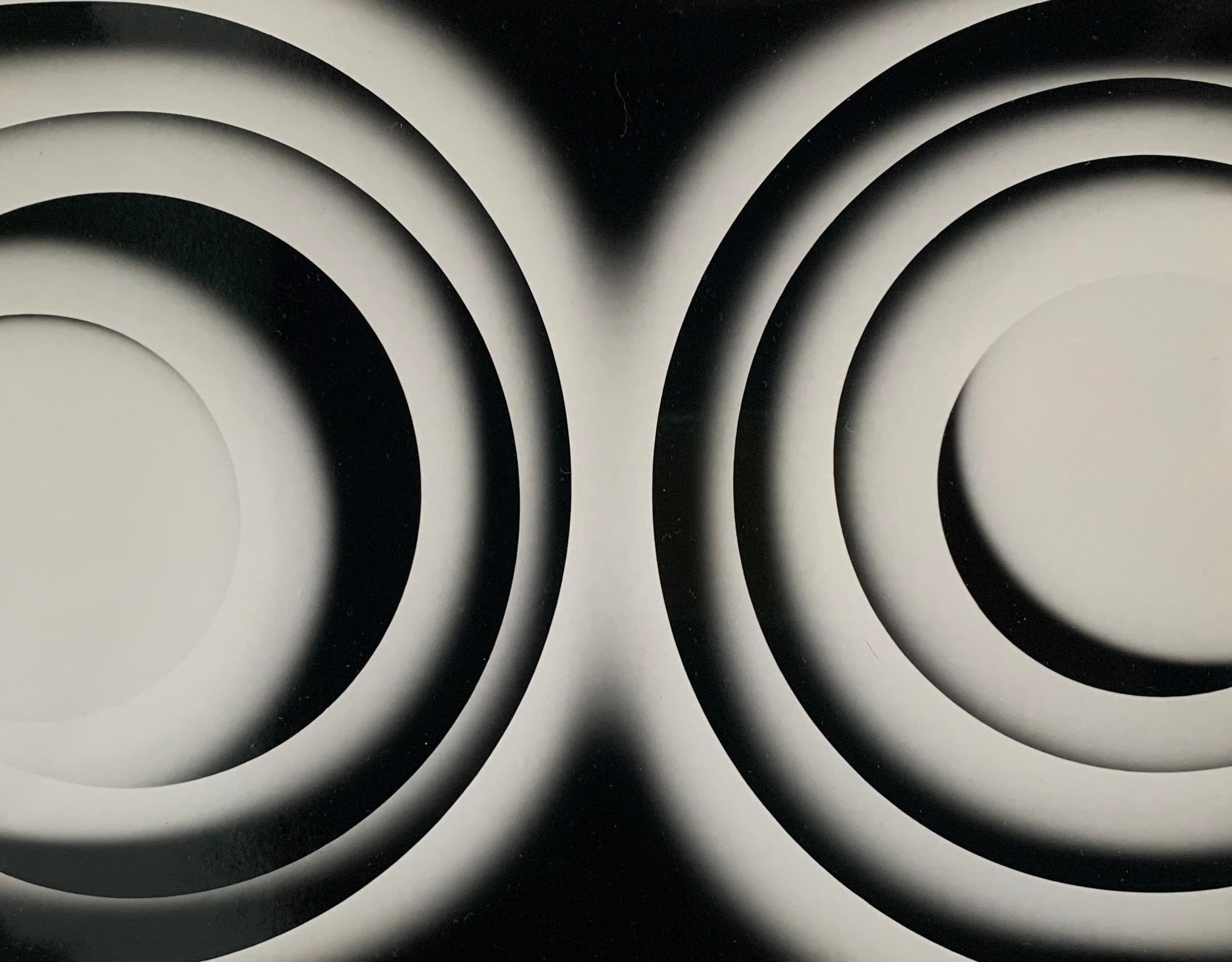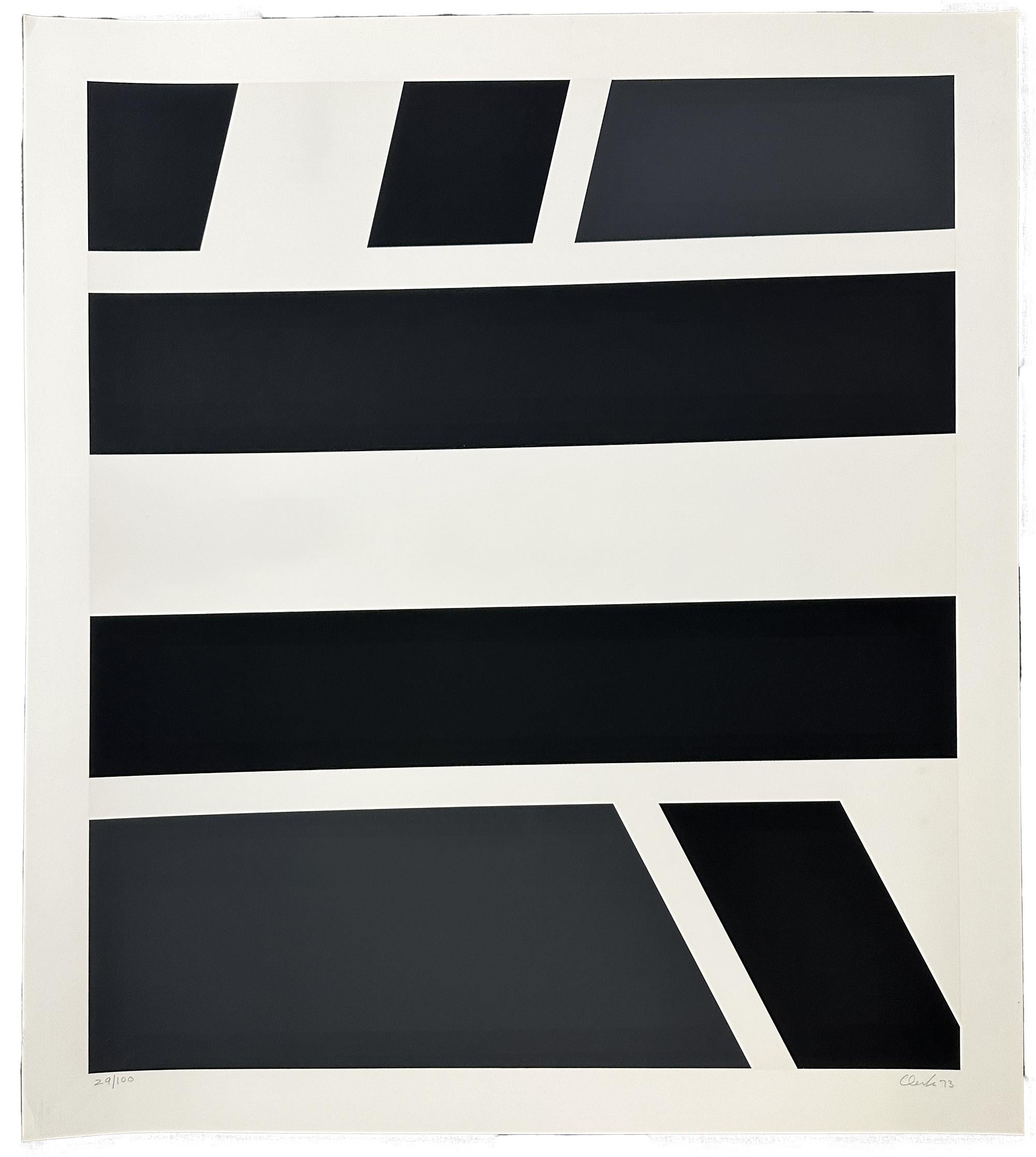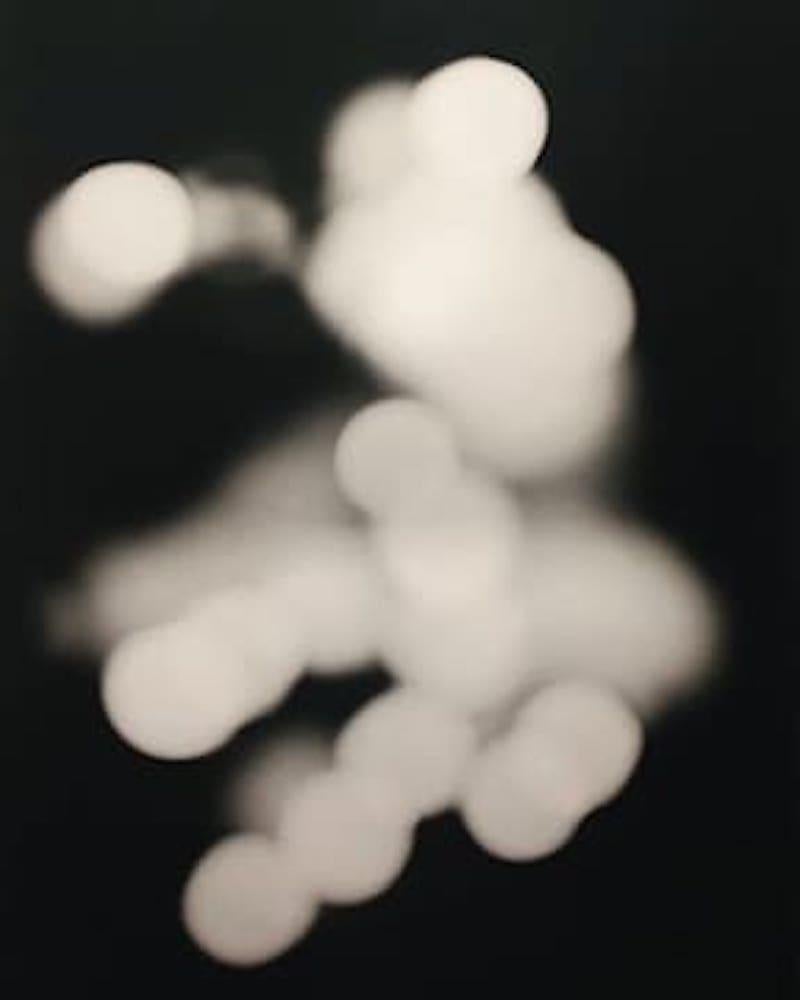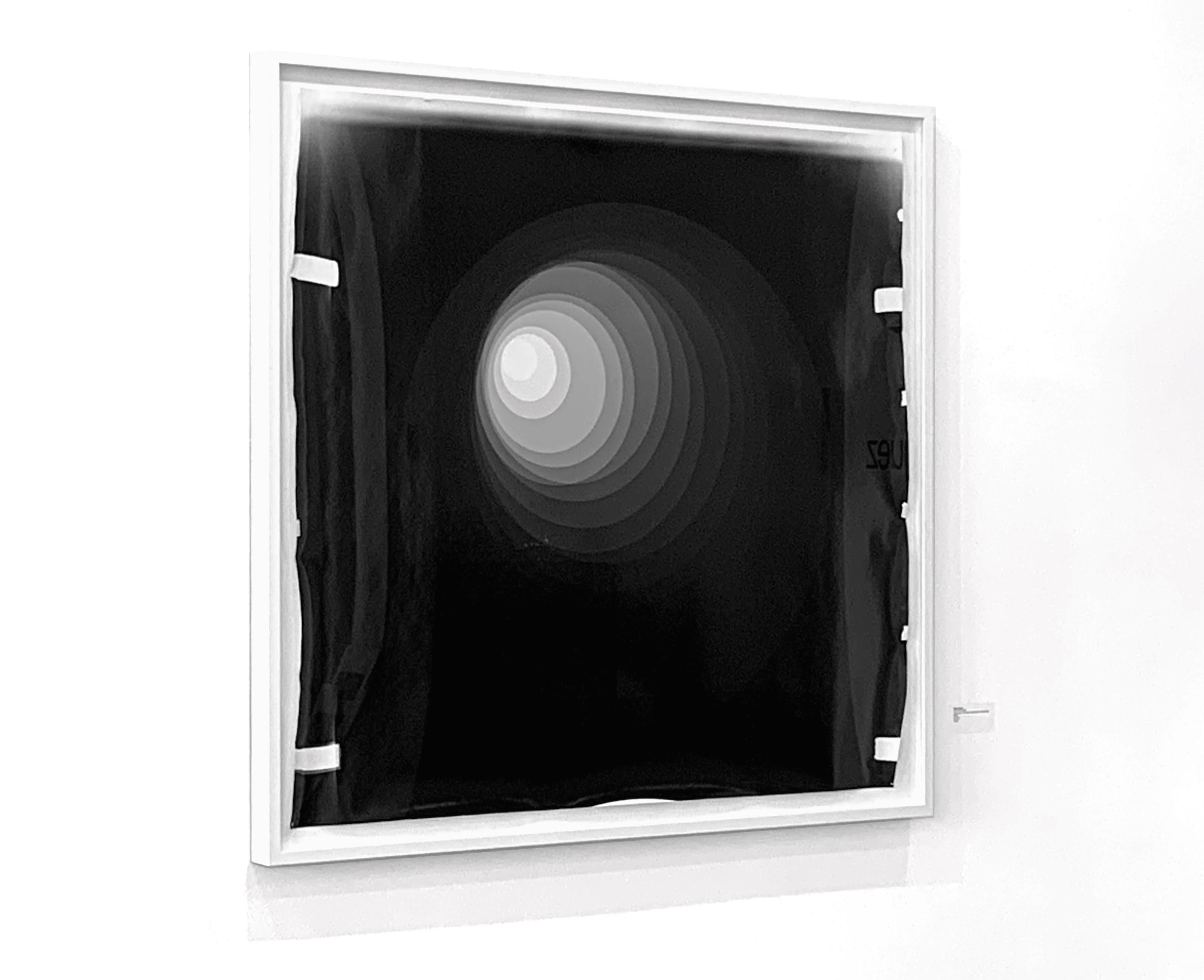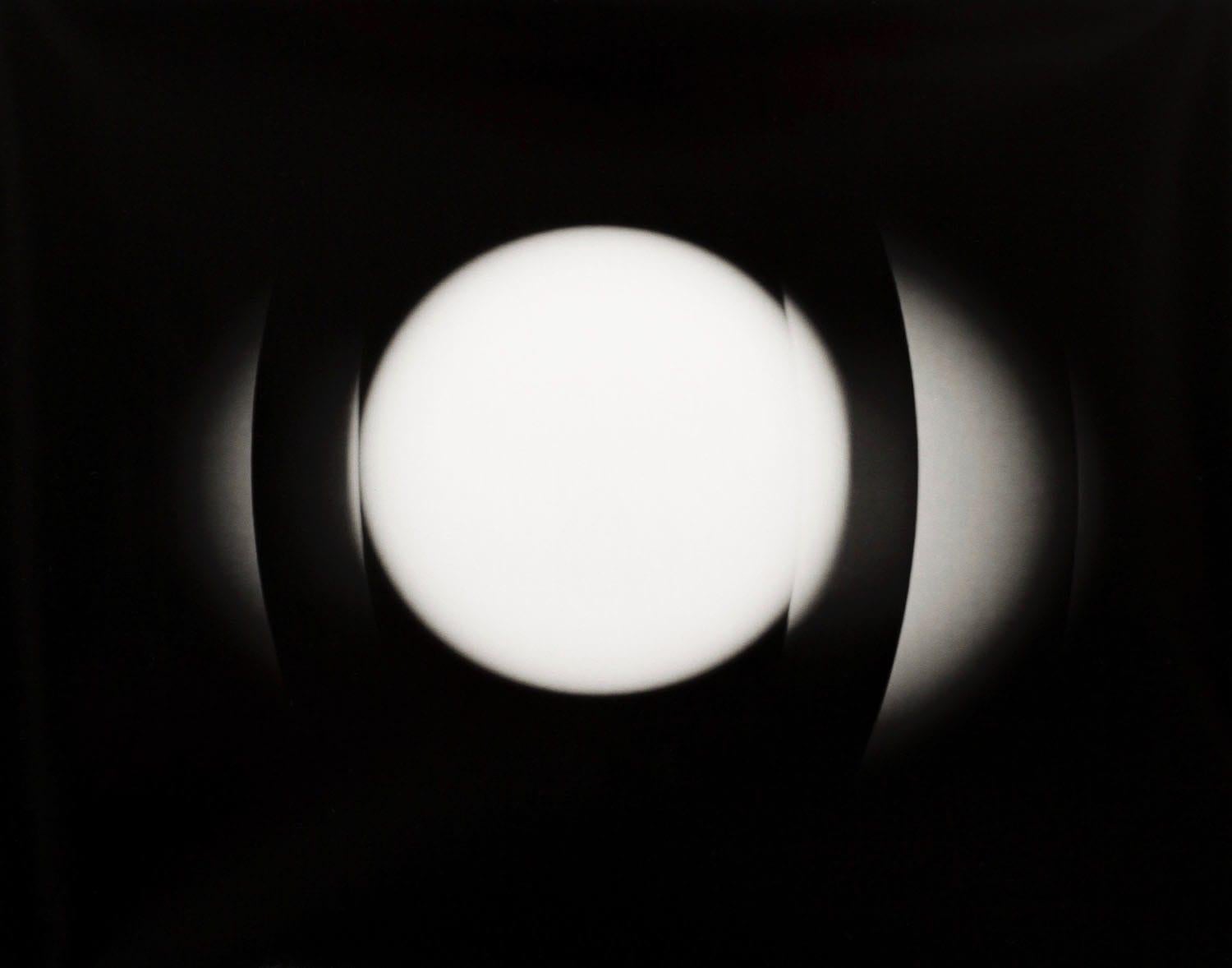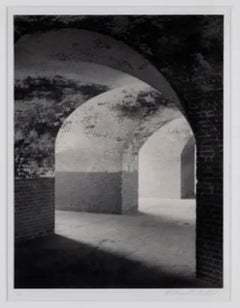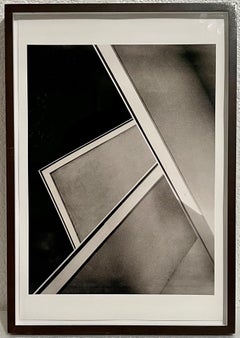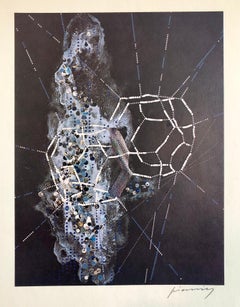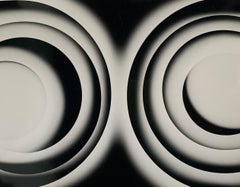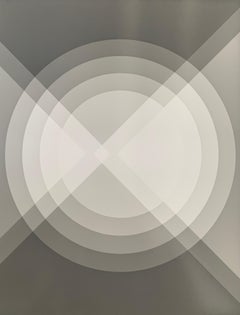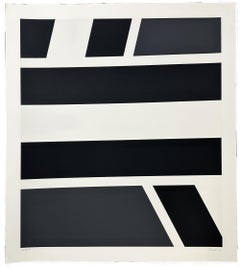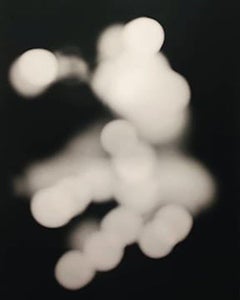Items Similar to 1991 "Gate" Large Scale Signed Vintage Silver gelatin Print Photograph
Want more images or videos?
Request additional images or videos from the seller
1 of 7
Zeke Berman1991 "Gate" Large Scale Signed Vintage Silver gelatin Print Photograph1991
1991
$4,000
£3,038.10
€3,494.37
CA$5,588.78
A$6,232.13
CHF 3,251.66
MX$76,470.54
NOK 41,388.43
SEK 39,214.63
DKK 26,079.77
Shipping
Retrieving quote...The 1stDibs Promise:
Authenticity Guarantee,
Money-Back Guarantee,
24-Hour Cancellation
About the Item
Gate Taught Version 1991. Large format silver gelatin photo. signed and dated.
Zeke Berman’s still lifes are fabrications derived from the material of ordinary and intimate experience, reconstituted to satisfy the demands of improvised play, monocular vision, and the special characteristics of photographic description. They are concerned with the pictorial aspect of sculpture and the provisional nature of realistic indication. In the central tradition of still-life art, they aim to establish an unsuspected order in the congregation of unremarkable things.
Since the late 1970's Zeke Berman has been making singular, studio-based photographs. These works reflect his long standing interest in visual cognition, optics and
the intersection between sculpture, photography and drawing. The formal range of his work and his sculptural use of materials is varied, original and idiosyncratic. Berman’s work has been collected and exhibited in museums such as The Museum of Modern Art, The Metropolitan, Whitney, Art Institute of Chicago and LA
County Museum. His work was featured in the first New
Photography Exhibition, 1984, at MoMA. Awards include Guggenheim, NEA and NYFA Arts Fellowships. Berman lives and works in New York City.
from MOMA A World of Its Own: Photographic Practices in the Studio examines the ways in which photographers and other artists using photography have worked and experimented within their studios, from photography’s inception to the present. Featuring both new acquisitions and works from the Museum’s collection that have not been on view in recent years, A World of Its Own brings together photographs, films, and videos by artists such as Berenice Abbott, Uta Barth, Zeke Berman, Karl Blossfeldt, Constantin Brancusi, Geta Brătescu, Harry Callahan, Robert Frank, Jan Groover, Barbara Kasten, Man Ray, Bruce Nauman, Paul Outerbridge, Irving Penn, Adrian Piper, Edward Steichen, William Wegman, and Edward Weston.
Depending on the period, the cultural or political context, and the commercial, artistic, or scientific motivations of the artist, the studio might be a haven, a stage, a laboratory, or a playground. For more than a century, photographers have dealt with the spaces of their studios in strikingly diverse and inventive ways: from using composed theatrical tableaux (in photographs by Julia Margaret Cameron or Cindy Sherman) to putting their subjects against neutral backdrops (Richard Avedon, Robert Mapplethorpe); from the construction of architectural sets within the studio (Francis Bruguière, Thomas Demand) to chemical procedures conducted within the darkroom (Walead Beshty, Christian Marclay); and from precise recordings of motion (Eadweard Muybridge, Harold Edgerton) to playful, amateurish experimentation (Roman Signer, Peter Fischli and David Weiss). A World of Its Own offers another history of photography—a photography created within the walls of the studio, and yet as innovative as its more extroverted counterpart, street photography.
- Creator:Zeke Berman (1951, American)
- Creation Year:1991
- Dimensions:Height: 37.07 in (94.16 cm)Width: 45.57 in (115.75 cm)
- Medium:
- Movement & Style:
- Period:
- Condition:out of frame but protected by plexi and backing.
- Gallery Location:Surfside, FL
- Reference Number:1stDibs: LU38212300982
About the Seller
4.9
Platinum Seller
Premium sellers with a 4.7+ rating and 24-hour response times
Established in 1995
1stDibs seller since 2014
1,780 sales on 1stDibs
Typical response time: <1 hour
- ShippingRetrieving quote...Shipping from: Surfside, FL
- Return Policy
Authenticity Guarantee
In the unlikely event there’s an issue with an item’s authenticity, contact us within 1 year for a full refund. DetailsMoney-Back Guarantee
If your item is not as described, is damaged in transit, or does not arrive, contact us within 7 days for a full refund. Details24-Hour Cancellation
You have a 24-hour grace period in which to reconsider your purchase, with no questions asked.Vetted Professional Sellers
Our world-class sellers must adhere to strict standards for service and quality, maintaining the integrity of our listings.Price-Match Guarantee
If you find that a seller listed the same item for a lower price elsewhere, we’ll match it.Trusted Global Delivery
Our best-in-class carrier network provides specialized shipping options worldwide, including custom delivery.More From This Seller
View AllArchitectural Gelatin SIlver Print Vellum Photograph Mark Citret Vintage Photo
By Mark Citret
Located in Surfside, FL
Mark Citret, American, b. 1949.
"Third Story Arches", Fort Point, 1998
Silver gelatin print hand signed and editioned 1/45 in pencil along lower edge.
Published: "Along the Way" Mark Citret, Published Custom & Limited Editions, San Francisco, 1999. Plate #23.
Dimensions: Image area measures 8.25"h x 6.25"w., Frame measures 17.5 x 14.5
Mark Citret was born in 1949 in Buffalo, New York, and grew up in San Francisco. He began photographing seriously in 1968 and received both his BA and MA in Art from San Francisco State University.
He has worked on many photographic projects over the course of his career and continues to do so. From 1973 to 1975 he lived in and photographed Halcott Center, a farming valley in New York's Catskill Mountains. In the mid to late 1980s, he produced a large body of work with the working title of "Unnatural Wonders", which is his personal survey of architecture in the national parks. He spent four years, 1990 to 1993, photographing "Coastside Plant", a massive construction site in the southwest corner of San Francisco. Since he moved to his current home in 1986, he has been photographing the ever-changing play of ocean and sky from the cliff behind his house. Currently, he is in the midst of a multi-year commission from the University of California San Francisco, photographing the construction of their 43 acre Mission Bay life-sciences campus. He has taught photography at the University of California Berkeley Extension since 1982 and the University of California Santa Cruz Extension since 1988, and for organizations such as the Center for Photography at Woodstock, the Ansel Adams Gallery, and Santa Fe Workshops.He was included in the Weston Gallery exhibition NIGHT VISION: PHOTOGRAPHING IN THE DARK works by: Berenice Abbott, Wynn Bullock, Mark Citret, Harold Davis, Robert Frank, Ernst Haas, Chip Hooper, Rolfe Horn, Dale Johnson, Robb Johnson, Michael Kenna, André Kertész, Bob Kolbrener, Paul Kozal, Sally Mann and Jerry Uelsmann and PATTERNS IN ARCHITECTURE works by Ansel Adams, Brett Weston, Edward Weston, Oliver Gagliani, Pirkle Jones...
Category
1990s American Modern Black and White Photography
Materials
Vellum, Silver Gelatin
Brazilian Conceptual Modernist Photograph Jose Yalenti Architectural Abstract
Located in Surfside, FL
José Yalenti, (1895-1967) Brazilian Photographer
"Beiras" (Sides)
Photo, numbered 5/15, circa 1950, (printed later) on premium luster photo paper with ultrachrome ink.
Art: 15" H x 11" W; Frame: 20 1/4" H x 14 1/4" W.
Provenance: Dickinson Roundell Gallery
José Yalenti’s Architecture photos seem at first disorienting, abstract black & white and grey surfaces, cut through by startlingly straight lines and a variety of surface textures. Much of his work is of mid-century Latin American architecture, by the likes of Oscar Niemeyer and Roberto Burle Marx.
José Yalenti was born in São Paulo, Brazil in 1895. On April 28, 1939, a group of photography aficionados, including Yalenti, formed the Foto Clube Bandeirante, later changed to Foto Cine Clube Bandeirante, or FCCB.
Starting in the late 1940s, a contingent of FCCB photographers began creating photographs of abstracted architectural motifs (as in Architecture or Twilight), and eventually became known as the Escola Paulista, or “Paulista School.” Yalenti was among the members of the unofficial Paulista School. Between 1945 and 1960, the Paulista School photographers explored the rapidly changing formal qualities of São Paulo. By photographing skyscrapers and stairways at steep angles, creating closely cropped compositions from found geometric motifs, and capturing the flattening effects of shadows, Paulista School photographers investigated the new physical perspectives emerging in the urban environment. They created a distinctively Modern aesthetic that used strong contrasts of light and dark, geometric forms, linear compositions, and collapsed space to assert photography’s status as an artistic medium.
As part of their pursuit of photographic Modernism, Yalenti and his fellow Brazilians adapted the stylistic innovations of U.S. and European photographers such as f.64, New Objectivity, Dada, Surrealism, and the Bauhaus, to the Brazilian context. Along with his FCCB compatriots—Thomaz Farkas, Geraldo de Barros, and German Lorca, among others—Yalenti explored the formal properties of black-and-white image-making.
Yalenti and the Paulista’s School’s abstract photographs responded to the new trends in Brazilian Modernist architecture being developed by young architects in São Paulo and Rio de Janeiro. In 1939, Lúcio Costa, Oscar Niemeyer, and Affonso Reidy broke ground on the Ministry of Education and Health Building (MES), the building that would define Brazilian architectural modernism. The Rio-based team combined elements of Le Corbusier’s undecorated structural purity with Brazilian regional design to produce a more organic and “tropical” Modernism that responded to the local culture and climate.
The sinuous and sensuous curves of Yalenti’s photograph are directly influenced by stylistic developments in architecture at the MES, including the building’s covered entry and its organically abstract contours. By 1957, when Yalenti created Architecture or Twilight, Brazil was globally recognized as an architectural leader. MoMA in New York City organized a popular exhibition of Brazilian architecture in 1943 (“Brazil Builds”), and highlighted the country again in its survey show "Latin American Architecture since 1945," that ran from 1955–56. Brazilian photography...
Category
20th Century Modern Black and White Photography
Materials
Photographic Paper
Pencil Signed Abstract Geometric Graphic Design Lithograph Print, Bauhaus Artist
By M. Peter Piening
Located in Surfside, FL
M. Peter Piening was born on March 14, 1908 in Grabow, Germany. He began his education at a private school in Italy, studied at the Jesuit school of Kloster Ettal in Bavaria, and attended the German Stettin Gymnasium, where he graduated in 1926. Between 1926 and 1928 Piening studied design at the Bauhaus in Dessau, Germany. There he was taught by multiple famous twentieth-century artists, including Joseph Albers, Paul Klee and Mies van der Rohe. After receiving his master’s degree from the Bauhaus in 1929, Piening enrolled at the University of Berlin and obtained his PhD in philosophy in 1931.
Piening spent his early career free-lancing as an illustrator and artist for various publishing companies, eventually settling in Paris to work for Condé-Nast’s French publication of Vogue. In 1934 he moved to the United States to work in Condé-Nast’s New York City office. For the next two decades, Piening worked for many important advertising agencies and magazine publishers, including the N. W. Ayer and J. Walker Thompson agencies and Life and Fortune magazines. As art director for Life in the 1930s and for Fortune in the 1940s, Piening completely redesigned the layout of each magazine. He also redesigned the layouts for thirty-four other major American magazines, including Town & Country and Cosmopolitan.
Through his design work, Piening had a great impact on the American public, although the millions who encountered his work most likely never knew his name. Between 1934 and 1964, Piening designed over sixty logos and trademarks for internationally-known products and companies. His most widely-recognized logo may have been the three interlocking rings of Ballantine beer. Piening’s other trademark designs include the Lincoln Zephyr...
Category
1960s Abstract Geometric Abstract Prints
Materials
Lithograph
Jean Marie Haessle Abstract Geometric Op Art Silkscreen Lithograph Print
By Jean-Marie Haessle
Located in Surfside, FL
Jean Marie Haessle, French-American (1939-)
Serigraph silkscreen
Hand signed in pencil and numbered
Elana's Dream (red background)
1980
Jean Marie Haessle was born in 1939 in Alsa...
Category
1980s Abstract Geometric Abstract Prints
Materials
Lithograph, Screen
Pencil Signed Abstract Geometric Graphic Design Lithograph Print, Bauhaus Artist
By M. Peter Piening
Located in Surfside, FL
M. Peter Piening was born on March 14, 1908 in Grabow, Germany. He began his education at a private school in Italy, studied at the Jesuit school of Kloster Ettal in Bavaria, and attended the German Stettin Gymnasium, where he graduated in 1926. Between 1926 and 1928 Piening studied design at the Bauhaus in Dessau, Germany. There he was taught by multiple famous twentieth-century artists, including Joseph Albers, Paul Klee and Mies van der Rohe. After receiving his master’s degree from the Bauhaus in 1929, Piening enrolled at the University of Berlin and obtained his PhD in philosophy in 1931.
Piening spent his early career free-lancing as an illustrator and artist for various publishing companies, eventually settling in Paris to work for Condé-Nast’s French publication of Vogue. In 1934 he moved to the United States to work in Condé-Nast’s New York City office. For the next two decades, Piening worked for many important advertising agencies and magazine publishers, including the N. W. Ayer and J. Walker Thompson agencies and Life and Fortune magazines. As art director for Life in the 1930s and for Fortune in the 1940s, Piening completely redesigned the layout of each magazine. He also redesigned the layouts for thirty-four other major American magazines, including Town & Country and Cosmopolitan.
Through his design work, Piening had a great impact on the American public, although the millions who encountered his work most likely never knew his name. Between 1934 and 1964, Piening designed over sixty logos and trademarks for internationally-known products and companies. His most widely-recognized logo may have been the three interlocking rings of Ballantine beer. Piening’s other trademark designs include the Lincoln Zephyr...
Category
1960s Abstract Geometric Abstract Prints
Materials
Lithograph
Pencil Signed Abstract Geometric Graphic Design Lithograph Print, Bauhaus Artist
By M. Peter Piening
Located in Surfside, FL
M. Peter Piening was born on March 14, 1908 in Grabow, Germany. He began his education at a private school in Italy, studied at the Jesuit school of Kloster Ettal in Bavaria, and attended the German Stettin Gymnasium, where he graduated in 1926. Between 1926 and 1928 Piening studied design at the Bauhaus in Dessau, Germany. There he was taught by multiple famous twentieth-century artists, including Joseph Albers, Paul Klee and Mies van der Rohe. After receiving his master’s degree from the Bauhaus in 1929, Piening enrolled at the University of Berlin and obtained his PhD in philosophy in 1931.
Piening spent his early career free-lancing as an illustrator and artist for various publishing companies, eventually settling in Paris to work for Condé-Nast’s French publication of Vogue. In 1934 he moved to the United States to work in Condé-Nast’s New York City office. For the next two decades, Piening worked for many important advertising agencies and magazine publishers, including the N. W. Ayer and J. Walker Thompson agencies and Life and Fortune magazines. As art director for Life in the 1930s and for Fortune in the 1940s, Piening completely redesigned the layout of each magazine. He also redesigned the layouts for thirty-four other major American magazines, including Town & Country and Cosmopolitan.
Through his design work, Piening had a great impact on the American public, although the millions who encountered his work most likely never knew his name. Between 1934 and 1964, Piening designed over sixty logos and trademarks for internationally-known products and companies. His most widely-recognized logo may have been the three interlocking rings of Ballantine beer. Piening’s other trademark designs include the Lincoln Zephyr...
Category
1960s Abstract Geometric Abstract Prints
Materials
Lithograph
You May Also Like
Framed geometric abstract black&white Unique Silver Gelatin Print "Conjoined"
Located in San Francisco, CA
Black and white unique silver gelatin print, (chemical print on fiber-based paper), in white frame.
Betsy Kenyon’s work is a merging of different process...
Category
2010s Black and White Photography
Materials
Silver Gelatin
Framed geometric black & white Unique Silver Gelatin Print "Overlap"
Located in San Francisco, CA
Black and white unique gelatin silver print, (chemical print on fiber-based paper), in black frame with no glass, which allows one to see the texture of the paper and enjoy the image unobstructed.
Betsy Kenyon...
Category
2010s Black and White Photography
Materials
Silver Gelatin
Pierre Clerk Black and White 1973 Signed Limited Edition Large Silkscreen
Located in Rochester Hills, MI
Pierre Clerk
Black and White - 1973
Print - Silkscreen on Somerset paper 32'' x 36''
Edition: Signed in pencil and marked 27/100
image size: 28" x 32" i...
Category
1970s Abstract Geometric Abstract Prints
Materials
Screen
Framed black&white Unique Silver Gelatin Print "Condense 3"
Located in San Francisco, CA
Black and white unique gelatin silver print, (chemical print on fiber-based paper), in white frame. There is no glass or acrylic covering the work to highlight the texture of the paper.
Betsy Kenyon...
Category
2010s Abstract Geometric Black and White Photography
Materials
Silver Gelatin, Photogram
$3,360 Sale Price
20% Off
Large framed textural abstract geometric black & white darkroom photo
Located in San Francisco, CA
"Form Worm" is a black and white unique silver gelatin print, (chemical print on fiber-based paper), in white frame.
Betsy Kenyon’s work is a merging of ...
Category
2010s Black and White Photography
Materials
Silver Gelatin
$4,480 Sale Price
20% Off
Small Framed abstract black & white Unique Silver Gelatin Print "Shift"
Located in San Francisco, CA
Black and white unique gelatin silver print, (chemical print on fiber-based paper), in white frame.
Betsy Kenyon’s work is a merging of different processes; using darkroom technique...
Category
2010s Black and White Photography
Materials
Silver Gelatin
$1,040 Sale Price
45% Off
